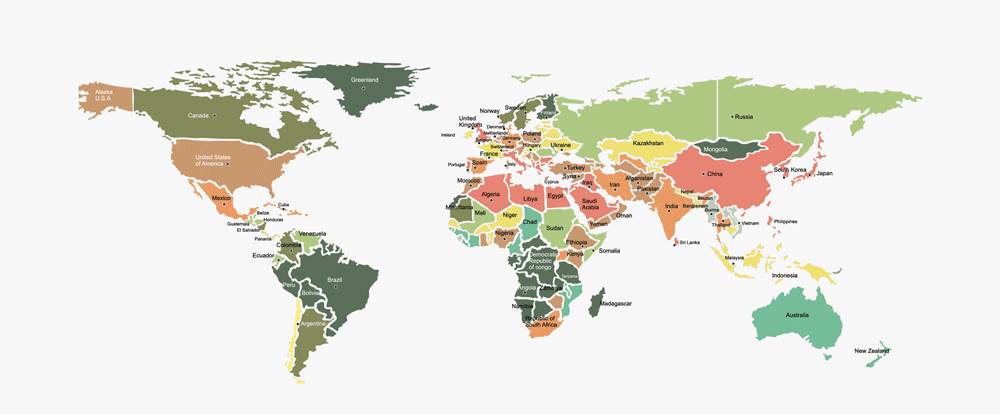
Woven Chronicle
2022
circuit boards, speakers, electric wires and fittings
single channel audio (10 min.)
132 x 528 x 12 in. I 335 x 1341 x 30 cm.
Woven Chronicle is a collection of wall drawings that Kallat has been realising since 2011 with diverse content. This iteration shows the impact of human activity on the environment using a colour code to represent the ecological footprint of each country. The ecological footprint is determined here by how much land and water a population requires to produce the resources it consumes, and by the rate at which the waste generated in the process can be naturally recycled to produce new resources. When a population’s ecological footprint exceeds its biocapacity, it results in a biocapacity deficit in that region, signifying an “ecological deficit”. This occurs when the demand for goods and services that the land and seas can produce is greater than what the region’s ecosystems can regenerate. If, however, the carbon footprint of a region is smaller than its biocapacity, that means that the people there consume less resources than their biosphere regenerates and absorbs. This is referred to as an “ecological credit”. Through this visualization of ecological debtors and creditors, the Global Footprint Network aims to stimulate a dialogue about the growing significance of biocapacity. In the installation, the map distinguishes between the high standard of living in the Global North and the comparatively lower standard in the South. Interestingly, this particular scale reverses the conventional roles as it reveals that the South is performing relatively well in terms of biocapacity, while the Global North exhibits a significantly larger ecological footprint in comparison to its biocapacity.








Photo credit: David Aebi